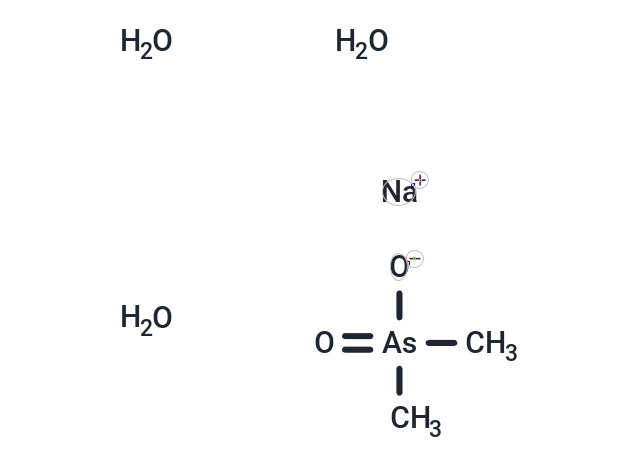 您的购物车当前为空
您的购物车当前为空
Cacodylic Acid sodium hydrate
一键复制产品信息Cacodylic acid, employed extensively in buffers for electron microscopy techniques and in introducing arsenic into proteins for single-wavelength anomalous diffraction (SAD) phasing in protein crystallography, has been found to elevate tumor formation risk in the bladder, kidney, liver, and thyroid gland of rats exposed to carcinogens, at concentrations starting from as low as 50 ppm for the bladder.

Cacodylic Acid sodium hydrate
一键复制产品信息Cacodylic acid, employed extensively in buffers for electron microscopy techniques and in introducing arsenic into proteins for single-wavelength anomalous diffraction (SAD) phasing in protein crystallography, has been found to elevate tumor formation risk in the bladder, kidney, liver, and thyroid gland of rats exposed to carcinogens, at concentrations starting from as low as 50 ppm for the bladder.
| 规格 | 价格 | 库存 | 数量 |
|---|---|---|---|
| 10 mg | 待询 | 8-10周 | |
| 50 mg | 待询 | 8-10周 |
产品介绍
| 产品描述 | Cacodylic acid, employed extensively in buffers for electron microscopy techniques and in introducing arsenic into proteins for single-wavelength anomalous diffraction (SAD) phasing in protein crystallography, has been found to elevate tumor formation risk in the bladder, kidney, liver, and thyroid gland of rats exposed to carcinogens, at concentrations starting from as low as 50 ppm for the bladder. |
| 分子量 | 214.024 |
| 分子式 | C2H12AsNaO5 |
| CAS No. | 6131-99-3 |
| 存储 | Powder: -20°C for 3 years | In solvent: -80°C for 1 year |
计算器
体内实验配液计算器
以上为“体内实验配液计算器”的使用方法举例,并不是具体某个化合物的推荐配制方式,请根据您的实验动物和给药方式选择适当的溶解方案。
剂量转换
对于不同动物的给药剂量换算,您也可以参考 更多





 还可以
还可以
 |
|